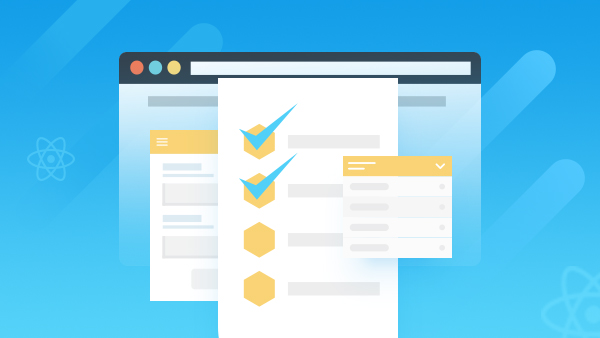本文将详细介绍React-beautiful-dnd入门所需的基本步骤和核心组件,帮助你轻松开始使用。从安装到使用,再到实现基本的拖拽功能,文章将一步步指导你完成设置。此外,还将介绍一些进阶功能和优化技巧,帮助你提升用户体验。
引入React-beautiful-dnd
React-beautiful-dnd是一个用于React的拖拽库,它允许你轻松地在网页上添加复杂的拖拽功能。它提供了丰富的API,使得构建拖拽交互变得简单直接。通过React-beautiful-dnd,你可以建立从简单的项拖动到复杂的列表排序等各种拖拽功能。
安装React-beautiful-dnd
要开始使用React-beautiful-dnd,首先需要安装它。你可以通过npm进行安装:
npm install react-beautiful-dnd安装完成后,你就可以在你的项目中引入并使用React-beautiful-dnd了。
引入并使用React-beautiful-dnd的基本步骤
- 安装依赖:如上文所述,首先安装
react-beautiful-dnd库。 - 引入组件:在你的React组件中引入
DragDropContext、Droppable和Draggable这三个核心组件。 - 定义Provider:使用
DragDropContext来包裹你的拖拽组件,提供拖拽环境。 - 使用Draggable和Droppable:用
Draggable表示可拖动的项,用Droppable表示可以接收拖动项的位置。 - 实现拖拽逻辑:监听拖拽事件并通过回调函数更新拖拽项的状态。
创建基本的拖拽布局
搭建拖拽环境的基础组件
拖拽功能的基础组件通常包括DragDropContext、Droppable和Draggable组件。这些组件确保了拖拽项可以在预定义区域之间进行移动。
使用Draggable和Droppable组件实现基本布局
Draggable组件用于定义可以拖动的对象,而Droppable组件则定义了可以接收拖动对象的位置。这两个组件共同工作来实现拖拽交互。
以下是一个简单的拖拽布局示例代码,它展示了如何使用Draggable和Droppable组件。
import React, { useState } from 'react';
import { DragDropContext, Droppable, Draggable } from 'react-beautiful-dnd';
const items = [
{ id: '1', content: 'Item 1' },
{ id: '2', content: 'Item 2' },
{ id: '3', content: 'Item 3' },
];
const App = () => {
const [items, setItems] = useState(items);
const onDragEnd = (result) => {
// 处理拖拽结束后的逻辑
};
return (
<DragDropContext onDragEnd={onDragEnd}>
<Droppable droppableId="items">
{(provided) => (
<div
ref={provided.innerRef}
{...provided.droppableProps}
>
{items.map((item, index) => (
<Draggable key={item.id} draggableId={item.id} index={index}>
{(provided) => (
<div
ref={provided.innerRef}
{...provided.draggableProps}
{...provided.dragHandleProps}
>
{item.content}
</div>
)}
</Draggable>
))}
{provided.placeholder}
</div>
)}
</Droppable>
</DragDropContext>
);
};
export default App;在这个示例中,我们定义了一个items数组,每个数组元素表示一个可以拖动的项。Draggable组件用于定义每个可拖动的项,Droppable组件则定义了可以接收这些项的位置。DragDropContext为整个拖拽环境提供上下文,通过onDragEnd回调函数可以处理拖拽结束后的逻辑。
实现拖拽功能
设置拖拽项的数据
拖拽项的数据可以通过一个数组来定义,数组中的每个元素都是一个对象,对象包含了项的唯一标识符id和项的内容。在拖拽过程中,这些数据会随着拖拽项的移动而更新。
监听拖拽事件
React-beautiful-dnd提供了事件处理机制,允许你监听拖拽过程中的各种事件,包括拖拽开始、拖拽结束、拖拽取消等。以下是一个简单的事件处理示例:
import React, { useState } from 'react';
import { DragDropContext, Droppable, Draggable } from 'react-beautiful-dnd';
const items = [
{ id: '1', content: 'Item 1' },
{ id: '2', content: 'Item 2' },
{ id: '3', content: 'Item 3' },
];
const App = () => {
const [items, setItems] = useState(items);
const onDragEnd = (result) => {
const { source, destination } = result;
if (!destination) return;
if (source.droppableId === destination.droppableId && source.index === destination.index) return;
const newItems = Array.from(items);
const item = newItems[source.index];
newItems.splice(source.index, 1);
newItems.splice(destination.index, 0, item);
setItems(newItems);
};
return (
<DragDropContext onDragEnd={onDragEnd}>
<Droppable droppableId="items">
{(provided) => (
<div
ref={provided.innerRef}
{...provided.droppableProps}
>
{items.map((item, index) => (
<Draggable key={item.id} draggableId={item.id} index={index}>
{(provided) => (
<div
ref={provided.innerRef}
{...provided.draggableProps}
{...provided.dragHandleProps}
>
{item.content}
</div>
)}
</Draggable>
))}
{provided.placeholder}
</div>
)}
</Droppable>
</DragDropContext>
);
};
export default App;在这个示例中,onDragEnd函数处理了拖拽结束的逻辑。当拖拽动作结束时,它会根据拖拽的源位置和目标位置来更新项的顺序。
更新拖拽项的状态
通过状态更新函数,例如useState,可以更新拖拽项的状态。在onDragEnd回调函数中,我们更新了拖拽项的数组,实现了项位置的重新排列。
进阶功能
使用Reorder实现排序功能
React-beautiful-dnd的Reorder组件可以帮助你实现更复杂的排序功能。Reorder可以用来管理拖拽项的排序逻辑,支持更复杂的拖拽场景。
import React, { useState } from 'react';
import { DragDropContext, Droppable, Draggable, Reorder } from 'react-beautiful-dnd';
const items = [
{ id: '1', content: 'Item 1' },
{ id: '2', content: 'Item 2' },
{ id: '3', content: 'Item 3' },
];
const App = () => {
const [items, setItems] = useState(items);
const onDragEnd = (result) => {
const { source, destination } = result;
if (!destination) return;
if (source.droppableId === destination.droppableId && source.index === destination.index) return;
const newItems = Reorder(result, items);
setItems(newItems);
};
return (
<DragDropContext onDragEnd={onDragEnd}>
<Reorder.Group>
<Droppable droppableId="items">
{(provided) => (
<div
ref={provided.innerRef}
{...provided.droppableProps}
>
{items.map((item, index) => (
<Draggable key={item.id} draggableId={item.id} index={index}>
{(provided) => (
<div
ref={provided.innerRef}
{...provided.draggableProps}
{...provided.dragHandleProps}
>
{item.content}
</div>
)}
</Draggable>
))}
{provided.placeholder}
</div>
)}
</Droppable>
</Reorder.Group>
</DragDropContext>
);
};
export default App;在这个示例中,我们使用了Reorder.Group和Reorder函数来处理拖拽项的排序逻辑。Reorder.Group提供了一个容器,而Reorder函数则根据拖拽结果更新项的顺序。
定制拖拽项的样式和动画
React-beautiful-dnd允许你自定义拖拽项的样式和动画效果。你可以使用CSS来定义拖拽项的样式,同时通过transition属性来定义动画效果。
import React, { useState } from 'react';
import { DragDropContext, Droppable, Draggable } from 'react-beautiful-dnd';
const items = [
{ id: '1', content: 'Item 1' },
{ id: '2', content: 'Item 2' },
{ id: '3', content: 'Item 3' },
];
const App = () => {
const [items, setItems] = useState(items);
const onDragEnd = (result) => {
const { source, destination } = result;
if (!destination) return;
if (source.droppableId === destination.droppableId && source.index === destination.index) return;
const newItems = Array.from(items);
const item = newItems[source.index];
newItems.splice(source.index, 1);
newItems.splice(destination.index, 0, item);
setItems(newItems);
};
return (
<DragDropContext onDragEnd={onDragEnd}>
<Droppable droppableId="items">
{(provided) => (
<div
ref={provided.innerRef}
{...provided.droppableProps}
style={{
border: '1px dashed grey',
padding: '20px',
display: 'flex',
flexWrap: 'wrap',
transition: 'all 0.3s ease',
}}
>
{items.map((item, index) => (
<Draggable key={item.id} draggableId={item.id} index={index}>
{(provided) => (
<div
ref={provided.innerRef}
{...provided.draggableProps}
{...provided.dragHandleProps}
style={{
margin: '10px',
padding: '10px',
backgroundColor: 'lightblue',
border: '1px solid lightgrey',
borderRadius: '4px',
transition: 'transform 0.3s ease',
}}
>
{item.content}
</div>
)}
</Draggable>
))}
{provided.placeholder}
</div>
)}
</Droppable>
</DragDropContext>
);
};
export default App;在这个示例中,我们为拖拽项和容器定义了不同的样式和过渡效果,以实现拖拽时的视觉反馈。
拖拽反馈和提示信息
为了提供更好的用户体验,你可以在拖拽过程中显示一些反馈信息,例如提示用户当前拖拽项的位置或状态。这可以通过自定义拖拽组件和事件处理函数来实现。
import React, { useState } from 'react';
import { DragDropContext, Droppable, Draggable } from 'react-beautiful-dnd';
const items = [
{ id: '1', content: 'Item 1' },
{ id: '2', content: 'Item 2' },
{ id: '3', content: 'Item 3' },
];
const App = () => {
const [items, setItems] = useState(items);
const onDragStart = (result) => {
console.log('Drag started:', result);
};
const onDragEnd = (result) => {
const { source, destination } = result;
if (!destination) return;
if (source.droppableId === destination.droppableId && source.index === destination.index) return;
const newItems = Array.from(items);
const item = newItems[source.index];
newItems.splice(source.index, 1);
newItems.splice(destination.index, 0, item);
setItems(newItems);
};
return (
<DragDropContext onDragStart={onDragStart} onDragEnd={onDragEnd}>
<Droppable droppableId="items">
{(provided) => (
<div
ref={provided.innerRef}
{...provided.droppableProps}
>
{items.map((item, index) => (
<Draggable key={item.id} draggableId={item.id} index={index}>
{(provided) => (
<div
ref={provided.innerRef}
{...provided.draggableProps}
{...provided.dragHandleProps}
style={{
margin: '10px',
padding: '10px',
backgroundColor: 'lightblue',
border: '1px solid lightgrey',
borderRadius: '4px',
transition: 'transform 0.3s ease',
}}
>
{item.content}
</div>
)}
</Draggable>
))}
{provided.placeholder}
</div>
)}
</Droppable>
</DragDropContext>
);
};
export default App;在这个示例中,我们添加了onDragStart和onDragEnd事件处理函数。在拖拽开始时,会打印出拖拽开始的信息;在拖拽结束时,会更新项的顺序。这些信息可以用于显示提示信息或其他反馈。
错误排查与调试技巧
常见错误及解决方法
在使用React-beautiful-dnd时,可能会遇到一些常见的错误,例如:
- 拖拽项无法被拖动:检查
draggableId是否正确设置,以及Draggable和Droppable组件是否正确嵌套。 - 拖拽效果不合预期:确保拖拽事件处理逻辑正确,特别是在
onDragEnd函数中,检查是否正确更新了项的顺序。 - 错误信息提示:查看控制台中的错误信息,通常会给出具体的错误原因和解决方法。
调试工具与资源推荐
以下是一些常用的调试工具和资源,可以帮助你更好地调试和调试React-beautiful-dnd代码:
- Chrome DevTools:使用Chrome浏览器的开发者工具,通过检查元素和控制台来定位问题。
- console.log:在关键位置添加
console.log语句,输出组件状态和事件信息。 - React DevTools:安装React DevTools扩展,可以更方便地查看React组件的状态和树结构。
优化性能和用户体验的小技巧
- 避免不必要的重新渲染:使用React的
useMemo和useCallback钩子来优化组件的渲染逻辑。 - 合理的状态管理:合理管理和更新组件状态,避免不必要的状态更新。
- 优化拖拽体验:使用CSS Transitions和Transforms来优化拖拽项的动画效果。
- 性能监测:使用React性能监控工具来监测拖拽功能的性能,确保拖拽操作流畅。
实战演练与项目案例
拖拽列表应用实战
拖拽列表应用是一种常见的应用场景,例如待办事项列表、任务管理器等。通过拖拽项可以实现任务的排序和管理。
项目代码解析与分享
以下是一个完整的拖拽列表应用的代码示例:
import React, { useState } from 'react';
import { DragDropContext, Droppable, Draggable } from 'react-beautiful-dnd';
const items = [
{ id: '1', content: 'Item 1' },
{ id: '2', content: 'Item 2' },
{ id: '3', content: 'Item 3' },
];
const App = () => {
const [items, setItems] = useState(items);
const onDragEnd = (result) => {
const { source, destination } = result;
if (!destination) return;
if (source.droppableId === destination.droppableId && source.index === destination.index) return;
const newItems = Array.from(items);
const item = newItems[source.index];
newItems.splice(source.index, 1);
newItems.splice(destination.index, 0, item);
setItems(newItems);
};
return (
<DragDropContext onDragEnd={onDragEnd}>
<Droppable droppableId="items">
{(provided) => (
<div
ref={provided.innerRef}
{...provided.droppableProps}
style={{
border: '1px dashed grey',
padding: '20px',
display: 'flex',
flexWrap: 'wrap',
transition: 'all 0.3s ease',
}}
>
{items.map((item, index) => (
<Draggable key={item.id} draggableId={item.id} index={index}>
{(provided) => (
<div
ref={provided.innerRef}
{...provided.draggableProps}
{...provided.dragHandleProps}
style={{
margin: '10px',
padding: '10px',
backgroundColor: 'lightblue',
border: '1px solid lightgrey',
borderRadius: '4px',
transition: 'transform 0.3s ease',
}}
>
{item.content}
</div>
)}
</Draggable>
))}
{provided.placeholder}
</div>
)}
</Droppable>
</DragDropContext>
);
};
export default App;在这个示例中,我们创建了一个简单的拖拽列表应用。用户可以拖动列表项并改变它们的顺序。items数组定义了拖拽项的内容,DragDropContext、Droppable和Draggable组件则实现了基本的拖拽功能。
如何将拖拽功能集成到现有项目中
将拖拽功能集成到现有的React项目中,可以通过以下步骤实现:
- 安装React-beautiful-dnd:使用npm或yarn安装React-beautiful-dnd库。
- 引入必要组件:在需要添加拖拽功能的组件中引入
DragDropContext、Droppable和Draggable组件。 - 定义拖拽逻辑:实现拖拽事件的处理逻辑,包括拖拽开始、拖拽结束等。
- 更新状态和UI:根据拖拽结果更新组件的状态和UI,实现拖拽项的重新排序。
通过以上步骤,你可以将拖拽功能轻松地集成到现有的React项目中,提升用户体验和交互性。

 随时随地看视频
随时随地看视频




